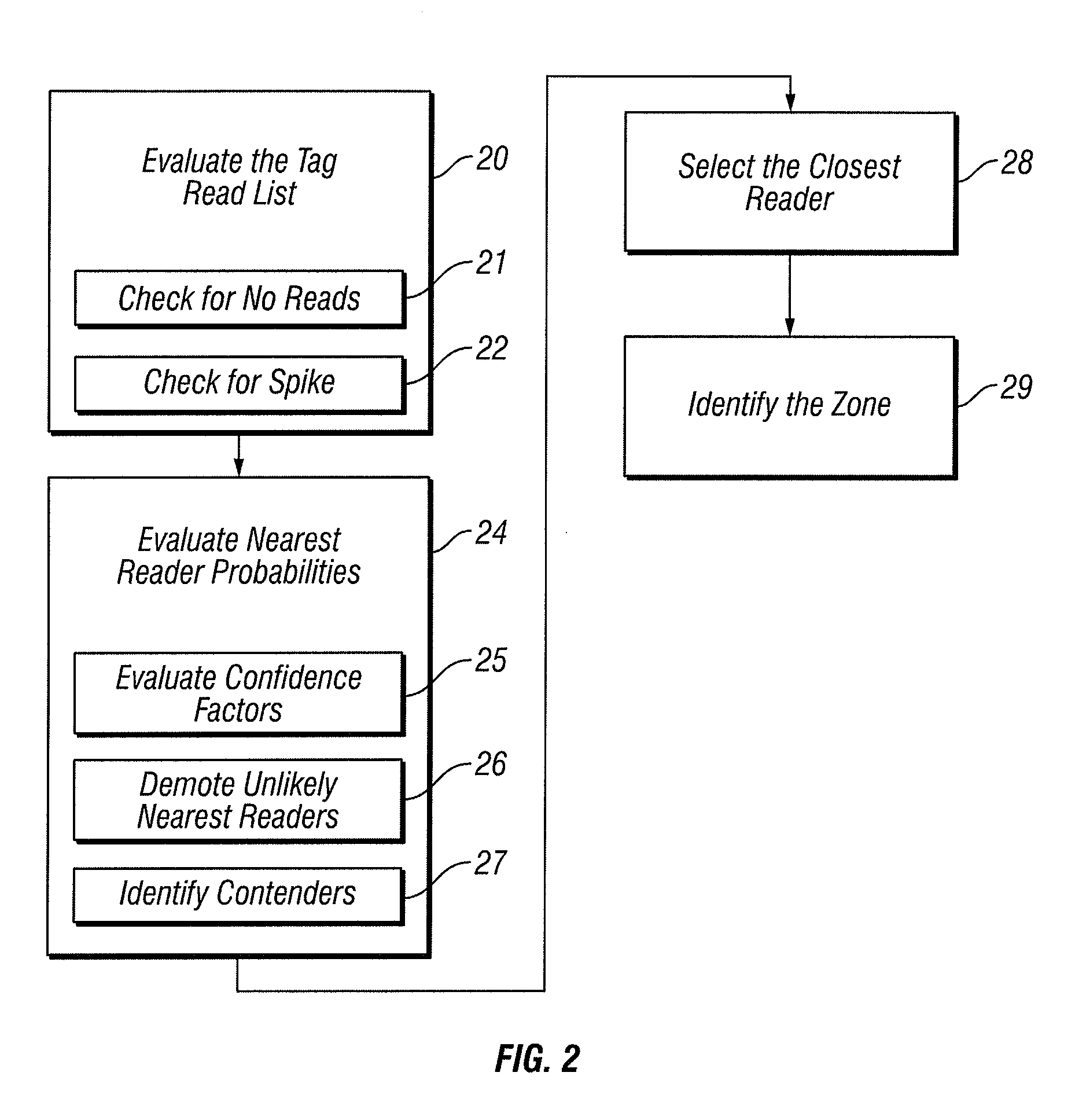Zone Determination by Combining Signal Strength with Topological Factors
a topological factor and signal strength technology, applied in direction finders using radio waves, instruments, reradiation, etc., can solve problems such as rfid technologies, affecting productivity and morale, and easy by-passing of basic security technologies, etc., to achieve smooth reduction of signal strength over distance. , the effect of combining signal strength and topological factors
- Summary
- Abstract
- Description
- Claims
- Application Information
AI Technical Summary
Benefits of technology
Problems solved by technology
Method used
Image
Examples
example topology
[0017
[0018]FIG. 1 is a block schematic diagram that provides an example of a real world zone topology. In the example of FIG. 1, the topology presents many of the challenges that the zone determination algorithm must accommodate.
[0019]Some of the important characteristics evident in this floor plan include:[0020]Zone 1 (11) is not an open zone, i.e. it can only be accessed by going through one door, but people can leave from two doors.[0021]Zone 2 (12) and Zone 3 (13) are not separated by any physical barriers, and users are free to walk between the zones unimpeded.[0022]Zone 3 is a non-rectangular shape.[0023]Someone in Zone 2 is highly unlikely to jump to either Zone 4 (14) or Zone 5 (15) without going through Zone 3, but it is not impossible to do so.[0024]Parts of Zone 5 are dead, where the tags in Zone 5 are not read by Zone 5, but may be read by Zone 4.
[0025]The Challenge
[0026]Most RFID systems use one or both of two basic approaches to determine the location of a tag:
[0027]1....
PUM
 Login to View More
Login to View More Abstract
Description
Claims
Application Information
 Login to View More
Login to View More - R&D
- Intellectual Property
- Life Sciences
- Materials
- Tech Scout
- Unparalleled Data Quality
- Higher Quality Content
- 60% Fewer Hallucinations
Browse by: Latest US Patents, China's latest patents, Technical Efficacy Thesaurus, Application Domain, Technology Topic, Popular Technical Reports.
© 2025 PatSnap. All rights reserved.Legal|Privacy policy|Modern Slavery Act Transparency Statement|Sitemap|About US| Contact US: help@patsnap.com



